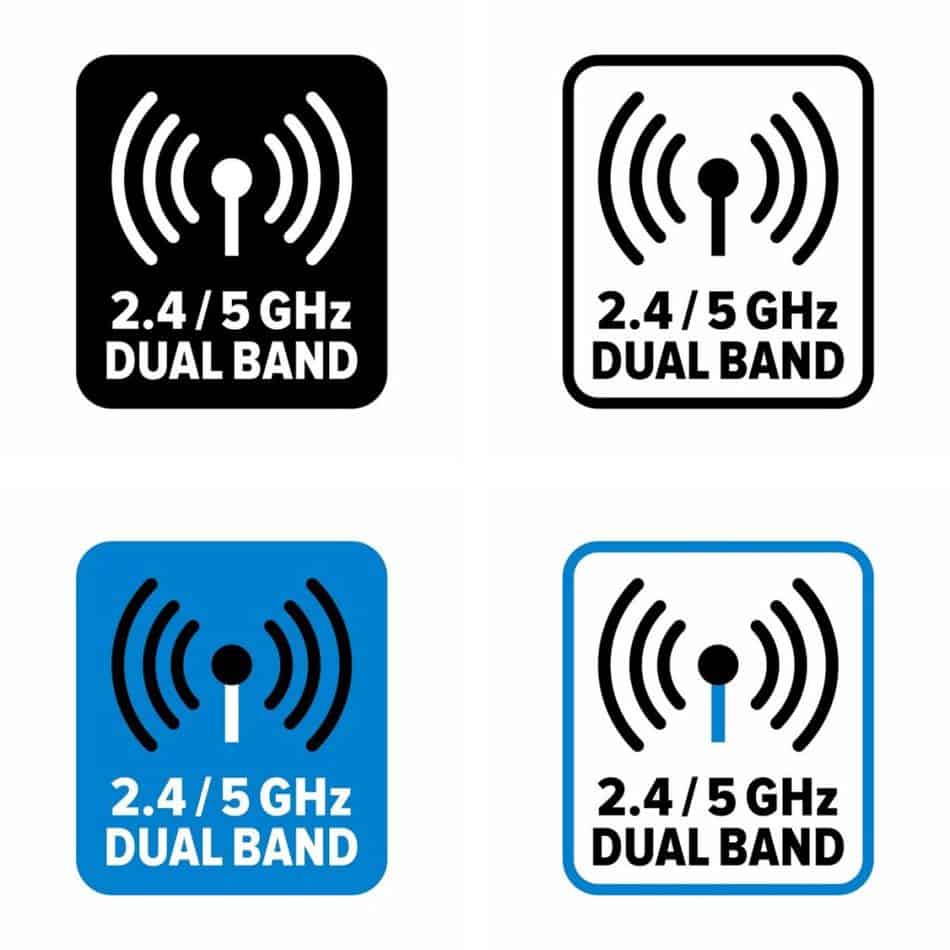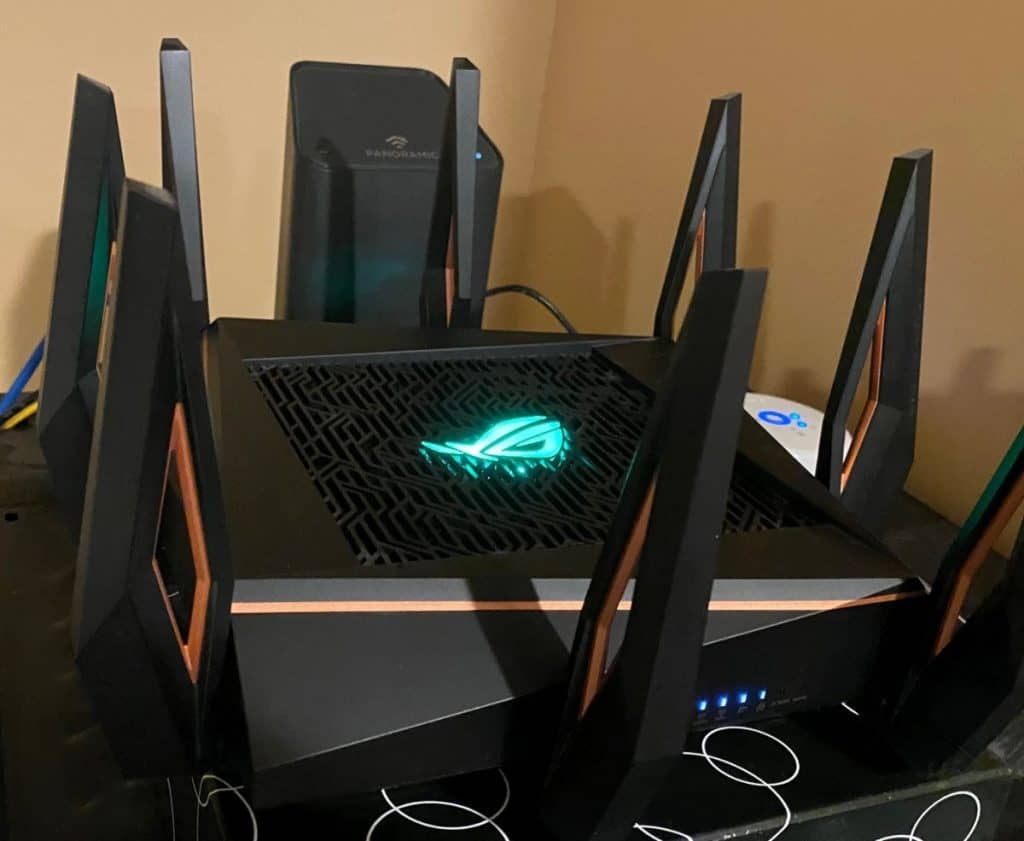When setting up WiFi in your home and connecting the long list of devices to your network, you’ll also need to consider what you want from your connectivity plan. For example, will you be using your devices all at once? Or are you a gamer and need high bandwidth for your game console to have a live stream in real-time?
You should split your devices between 2.4 GHz and 5 GHz based on your home’s size and the bandwidth speeds required for specific devices. A 2.4 GHz band works well for smartphones and laptops over larger areas. But devices that require higher bandwidths, such as gaming consoles, need 5 GHz.
To understand a little more about 2.4 GHz and 5 GHz, let’s look at the differences between the two and which devices will work the best on each band.

The Differences Between 2.4 GHz and 5 GHz
As mentioned before, a 2.4 GHz connection will support your devices with lower bandwidth and create a broader range of network connectivity, which is ideal if your device isn’t going to stay in the same place.
The longer-range is ideal for:
- Browsing the internet
- Smartwatches
- Smart assistants and speakers
- Thermostats
- Smart bulbs and doorbell cameras
A 5 GHz connection, on the other hand, will support devices that need high bandwidth and a strong connection. In addition, the 5 GHz band will support a shorter range of connectivity, so it will work best for stationary devices and ideally in the same room as the WiFi router.
This higher bandwidth will help with:
- Live-streaming games and videos
- Gaming
- Streaming HD videos on smart TVs
Most of the new routers you can buy today and routers installed by your internet provider have the choice of these two connectivity speeds to accommodate your different types of devices.
These two different bands will help you maximize your WiFi connection to get the best speeds for the correct devices.

Distance and Ranges
Whether you use 2.4 GHz or 5 GHz can also depend on the size of your home. For example, if you live in an apartment, you may be able to get away with connecting all of your devices to 5 GHz because you won’t ever be far enough away from the router to go out of range.
Whereas if you live in a home with multiple floors, 2.4 GHz will be better for handheld devices that you take with you from one room to the next, rather than a device that stays put and is located close to the router.
When you split up your devices across these two different speeds, you’re going to help increase the overall connectivity and help to keep speeds fast and efficient.
Best Devices Used for 2.4 GHz
You won’t have any trouble using these devices simultaneously due to their low bandwidth usage. They will also work at a longer distance away from your WiFi router than a device that needs a more robust connection, so you can move freely about your home and still receive a good connection.
Here are several devices that are best used for 2.4 GHz.
- Mobile Devices. Devices such as smartphones, tablets, and smartwatches use a low bandwidth that can be suitable for the 2.4 GHz speed. As a result, you will have a broader range to use your mobile device than if you were connected to the 5 GHz speed option.
- Computer (Internet Surfing and Research). If you’re using your computer for surfing the web, sending a few emails, or chatting on a messaging platform, the bandwidth you’re using will be so low you can use the 2.4 GHz. However, when you plan to use your computer for other purposes, such as gaming or streaming, you may have to switch to a higher speed.
- Baby Monitors. When your baby is in the next room, and you want to keep an eye (and an ear) on them, a baby monitor that works on your home WiFi network will be a good solution.
- Wireless Speakers. Devices that use a Bluetooth connection on the same WiFi network are best used on the lower 2.4 GHz speed. These speakers will take up very little bandwidth and can be used within a more extensive range.
Best Devices Used for 5 GHz
The 5 GHz band is the fastest speed your WiFi network can produce and is most likely the reason for choosing your internet plan since most plans are advertised by how many devices you can run on one network. So for devices that need optimal speeds, you’ll want to connect them to the 5 GHz band.
These devices might include:
- Televisions. Modern TVs have more features and capabilities today than ever before. This means they will need a crystal-clear connection to WiFi to be able to provide lightning-fast streaming times.
- Gaming Consoles. Streaming a live game that’s connected to a network of other players across the globe will need to be supported by strong connectivity speeds with no interruptions. 5 GHz will be the best choice for your gaming consoles.
- Computer (Streaming). Using your computer to play games online or watching Netflix? You’ll need a stronger connection to support faster speeds for streaming. Be aware that the farther you take your computer away from the ranger, the lower of a connection you’ll have.
- HD Security Camera. If you have a surveillance system installed in your home that provides a high-definition video of multiple angles inside and outside of your house, it may help to add this device to the 5 GHz band. This will support streaming speeds and connectivity to your other devices, especially if you use them to access HD videos.

Conclusion
Now that you know it is recommended to split your devices between 2.4 GHz and 5 GHz and the differences between each connection, you can go ahead and switch over all of your devices to their appropriate connections.
By splitting your devices between the two different speeds, you will be able to maximize your speeds and use your internet connection to its full potential.
